The <strong>starter bendix</strong> is a pivotal element within the automotive sector, denoting a device in the engine's starter mechanism that engages with the flywheel to commence engine activity. Serving as a drive gear, the <strong>starter bendix</strong> meshes with the flywheel to crank the engine and set it in motion. This component is indispensable for the dependability and efficacy of an engine's ignition system.
Types and Characteristics of Starter Bendix
Variety is key when it comes to the <strong>starter bendix</strong>, with designs varying widely to suit an array of engine types and brands. The <strong>bendix gy6</strong>, for instance, is customized for particular scooter engines, whereas the <strong>Yamaha Virago 750 bendix</strong> is crafted for specific motorcycle models. Each variant possesses distinct features that ensure it is compatible and performs optimally. The <strong>Polaris Sportsman 500 bendix</strong> is engineered for the challenges of off-road usage, boasting enhanced robustness to cope with the high torque demands of all-terrain vehicles. Conversely, the <strong>bendix car starter</strong> for passenger vehicles is designed for regular use, offering consistent reliability for daily drivers. Selecting the correct bendix is critical, as it directly influences the starter's performance and durability. For heavy-duty applications, such as trucks and construction equipment, the bendix must be sufficiently sturdy to engage larger flywheels and endure greater wear and tear.
Structure and Operation of Starter Bendix
The architecture of a <strong>starter bendix</strong> is an engineering feat, comprising a pinion gear, a helical drive, and a return spring. Activation occurs when the ignition key is turned, causing the starter motor to spin the pinion gear. The helical drive's design propels the gear outward, engaging with the flywheel due to centrifugal force. Upon engine ignition and key release, the return spring withdraws the pinion gear, disengaging it from the flywheel. This sophisticated mechanism ensures the starter motor ceases to spin while the engine is running, preventing excessive wear and potential breakdown. Additionally, a one-way clutch mechanism is incorporated to stop the gear from rotating at the flywheel's velocity post-engine start, safeguarding the starter motor from damage due to overspeeding.
Materials and Properties
Material selection for a <strong>starter bendix</strong> is paramount. Typically, high-grade steel is employed for the gear and shaft to provide the requisite toughness and resilience to counter the forces of engagement and the heat generated during operation. The clutch mechanism may integrate alloys or composite materials that offer both durability and a measure of pliability. These materials are chosen for their robustness, longevity, and their capacity to ensure a steadfast engagement between the bendix and the flywheel, which is vital for consistent ignition performance. Additionally, the materials must be resistant to corrosion and wear, as the bendix is frequently exposed to severe environmental conditions, including temperature variations and contact with oils and other chemicals.
Business Usages and Applications
Within the commercial sphere, the <strong>starter bendix</strong> is utilized across diverse sectors. In transportation, it underpins the dependability of buses and trucks, crucial to logistics and supply chain operations. In the agricultural field, tractors and combine harvesters rely on a sturdy ignition system to function in strenuous conditions. The construction industry depends on heavy machinery such as excavators and bulldozers, which necessitate a high-caliber <strong>starter bendix</strong> for regular starts throughout the workday. These sectors prize the bendix for its role in minimizing downtime and sustaining productivity. In marine environments, the bendix must perform reliably amidst moisture and saltwater, necessitating extra considerations in material choice and design. In these contexts, the reliability of the bendix is not merely a convenience but a matter of safety and operational integrity.
Functions and Tasks
The <strong>starter bendix</strong> is tasked with a vital role: engaging the engine's flywheel to kickstart the combustion process. It is charged with transmitting the rotational force from the starter motor to the engine. The bendix must engage and disengage swiftly and accurately, a function it repeats throughout the engine's lifespan. Its dependability is directly linked to the vehicle's starting capability. Beyond its primary role, the bendix also contributes to safeguarding the starter motor from damage by ensuring it remains disengaged while the engine operates.
Features and Unique Selling Points
Key attributes of a superior <strong>starter bendix</strong> encompass its capacity for high torque, resistance to wear, and the ability to engage smoothly without harming the flywheel. Certain bendix models boast innovative designs that diminish noise and enhance efficiency. These distinctive selling points differentiate them from competitors, promising longevity and dependability, which are essential for businesses that cannot tolerate frequent maintenance or operational pauses. Advanced models may also include additional features such as coatings or treatments that further bolster durability and performance in extreme conditions.
Benefits and Positive Outcomes
The advantages of a reliable <strong>starter bendix</strong> are numerous. It guarantees a swift ignition, which is especially critical for emergency vehicles and operations where time is of the essence. A quality bendix also lessens the load on the battery and starter motor, extending the lifespan of these components. For the end-user, this equates to savings on replacement and repair costs, as well as confidence in vehicle readiness. The environmental impact is also taken into account, as a dependable bendix reduces the necessity for multiple starting attempts, thus conserving fuel and decreasing emissions.
How to Use, Choose, and Maintain
Proper functioning of a <strong>starter bendix</strong> starts with correct installation, ideally performed by a skilled mechanic to ensure accurate engagement with the flywheel. Selecting the right bendix demands an understanding of the vehicle's specifications and the requirements of the engine's ignition system. Routine maintenance includes wear inspection, lubrication, and timely replacement. A well-maintained bendix is crucial for the longevity and reliability of the starter system. Cleaning the bendix involves eliminating any debris or accumulation that could hinder its function, and should be executed with suitable cleaning agents that do not compromise the materials. Proper upkeep also entails checking the alignment and confirming that the bendix is free to move as intended.
What are the signs that a starter bendix needs replacement?
Indicators that a <strong>starter bendix</strong> may require replacement include a grinding noise upon engine start, the engine failing to turn over despite an operational starter motor, and sporadic starting problems. These signs point to the bendix not properly engaging or disengaging with the flywheel.
How does a faulty starter bendix affect vehicle performance?
A malfunctioning <strong>starter bendix</strong> can precipitate a spectrum of performance issues, from an inability to start, to flywheel damage, and potential starter motor failure. It is imperative for the bendix to operate correctly to maintain the vehicle's reliability and avert expensive repairs.
Where can one find a quality starter bendix for their vehicle?
Reputable <strong>starter bendix</strong> components are available on Alibaba.com, which presents a vast selection tailored to various vehicle models and makes. Alibaba.com facilitates connections between buyers and trusted automotive part suppliers, ensuring access to the appropriate bendix for your specific vehicular needs.




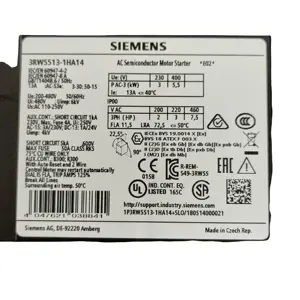


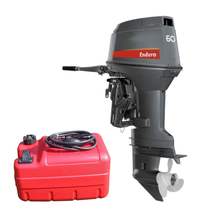
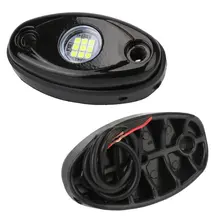


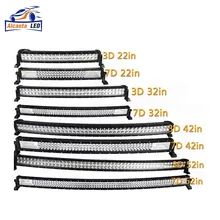


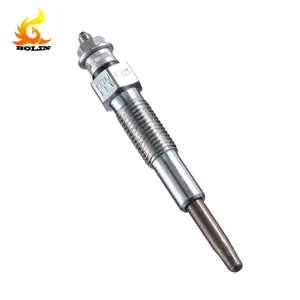

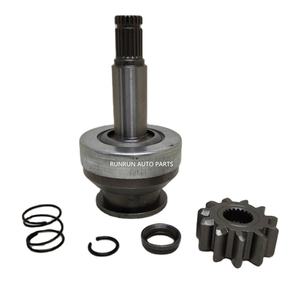
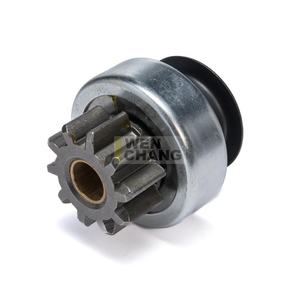
























 浙公网安备 33010002000092号
浙公网安备 33010002000092号 浙B2-20120091-4
浙B2-20120091-4